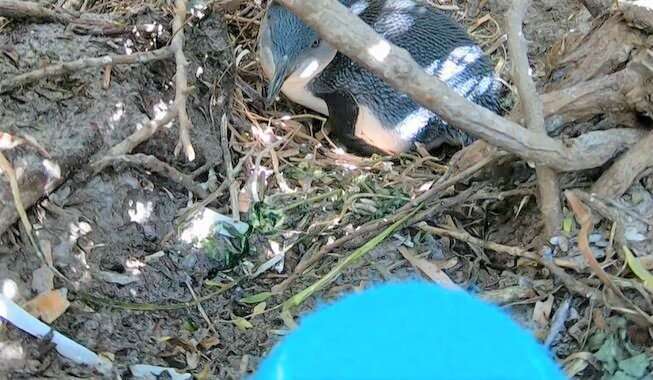Human disturbance affecting little penguins

Flinders University ecologists are calling on summer holiday-goers to not interfere with wildlife and damage habitats, notably for shy animals such as little penguins.
A new study has found increasing human disturbance to little penguin (Eudyptula minor) habitat may lead to increasingly aggressive behavior from the birds, prompting Flinders University researchers to call for tighter regulations that will help protect penguin colonies.
The study, "Little penguins are more aggressive on islands that experience greater unregulated human disturbance," by Diane Colombelli-Négrel and Andrew Katsis, published in the journal Animal Behavior—shows that individual animals may actively adjust their behavior to suit unwelcome changes to their environment.
Dr. Colombelli-Négrel led an assessment of the behavior of 43 little penguins (8 on the popular tourist location Granite Island, 20 at Troubridge Island and 15 from two locations at Penneshaw and Emu Bay on Kangaroo Island) to defend perceived threats to their nests.
The study involved a mix of genders (30 female and 13 male penguins) at the four South Australian colonies, finding that the site activity correlates with the behavioral actions of the penguins.
Simulating a nest intrusion while the penguins were inside led some penguins to show greater vigilance while others hissed and pecked at the intruder, explains researcher Dr. Andrew Katsis.
"Based on their response, we calculated an aggressiveness score for each bird. We discovered that penguins were more aggressive if their colony regularly experienced high levels of human disturbance," he says.
"Little penguins in our study were more aggressive and bolder on Granite Island, which has the greatest levels of unregulated human disturbance," adds Dr. Colombelli-Négrel.
"We demonstrated that aggressiveness during nest defense is repeatable in little penguins and may represent a consistent behavioral trait in this species.
"The aggressiveness did not vary with sex, nest type or breeding stage," she says. "Indeed, contrary to our prediction, we found no difference in aggressiveness between males and females."
The physical characteristics of the nest did not appear to explain individual differences in aggressiveness—but body size of the penguins was surprising factor.
On the more remote Troubridge Island off the Yorke Peninsula, penguins were the largest on average but they were also the shyest, confirming that animals living near urban environments face many pressures linked to human disturbance.
Dr. Colombelli-Négrel says these results highlight that behavioral variation in relation to human disturbance that may be important to consider for conservation strategies.
The researchers recommend that managers use nest aggression to assess human disturbances within colonies and manage disturbances during breeding—by limiting access to the colony, improving community awareness and signage, and enforcing regulations regarding predators.
"This may help protect the settlement of more sensitive birds," Dr. Colombelli-Négrel says.
More information: Diane Colombelli-Négrel et al, Little penguins are more aggressive on islands that experience greater unregulated human disturbance, Animal Behaviour (2021). DOI: 10.1016/j.anbehav.2021.10.012
Journal information: Animal Behaviour , Animal Behavior
Provided by Flinders University

















